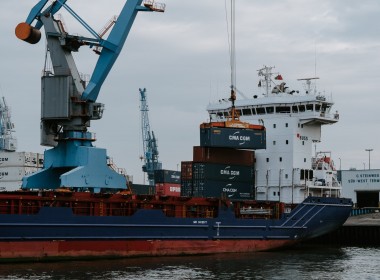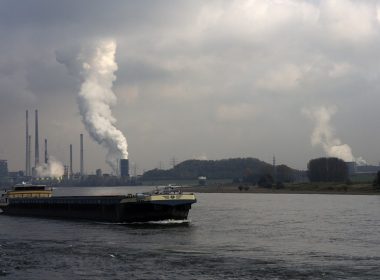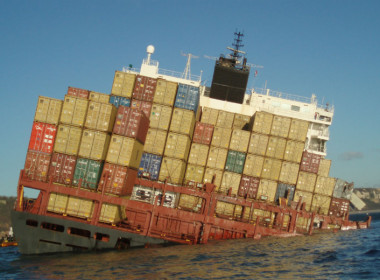COLUMN | The pressure is on the ports [Grey Power]

What do ports mean to society? It probably depends upon the identity of those asking the question. A sensible person, alert to the advantages of trade, would conclude that ports are unquestionably positive, often with a direct connection with the society itself, as the port may be the historic reason the nearby town or city was established in the first place. On the other hand, there might be those who deplore the traffic, congestion or atmospheric degradation that they believe is visited upon them by the presence of the nearby port.
And there is a third group, who look at a waterfront for its developmental possibilities and would like to chase the ships away, to replace them with the higher returns from residential or business property.
So, the relationship between ports and society matter and those running ports have to be alert to these diverse agendas. Patrick Verhoeven, who is managing director of the International Association of Ports and Harbors (IAPH) is understandably a lifelong champion of ports, having concluded a long time ago that their very existence is adding enormous value to society. But he will also suggest that while the port is arguably the most vital link in an increasingly complex supply chain, it is very much up to the port to keep society onside and ensure that those outside the dock gates recognise the importance of what is within them.
“All ports find themselves at different stages in the energy transition that is gradually becoming universal.”
You can find plenty of excellent examples of ports that work actively and closely with their local societies and it is clear that this invariably pays a dividend in goodwill. It may take a bit of effort, as you cannot have the public wandering around busy ports, but just acquainting the local population of what the port is doing, ensuring that its value to society is emphasised, and an ongoing campaign of information and education can work wonders and build bridges.
The IAPH membership includes a very varied portfolio of ports, from the very biggest and technologically advanced in the developed world, to less advanced facilities in the developing countries. But all find themselves at different stages in the energy transition that is gradually becoming universal, with the simultaneous challenges of digitisation and decarbonisation affecting the full spectrum of port enterprises. Patrick points out the pace of change varies greatly throughout the world, which is something of a challenge for any trade organisation,. The IAPH is thus becoming an important facilitator to try and close this gap, which has not gotten any smaller as a result of the volatility caused by the pandemic and the war in Eastern Europe.
Patrick was in London speaking to the members of the General Stevedores Council, itself a notably international organisation that recently celebrated its first half century. If the IAPH is devoted to ports and their development, the GSC focuses on people, in particular those whose job it is to move cargo through those ports. It provides management training at both ordinary and senior level with regular and well attended courses. People who run stevedoring companies can be quite isolated and the GSC courses will see around two dozen fortunate individuals given the opportunity to travel to different terminals, study how others move cargo, and gain a far more all-embracing view of their profession.
“Ports and terminals are increasingly finding themselves being pressured for greater efficiencies by those on both land and sea-sides.”
Anyone who has participated in these courses will speak of how their horizons have been broadened both by meeting people from other parts of the world and studying the operations of very different terminal operations from those to which they are accustomed. And a further benefit is clearly the friendships that are made among a now quite numerous alumni from these courses, whose members help each other solve problems, when they come up in their home ports and terminals.
And amid all the demands for cleaner operations and the financial demands of digitisation, the ports and terminals are increasingly finding themselves being pressured for greater efficiencies by those on both land and sea-sides. With the whole supply chain tightened by ships going slower on passage to save the planet, terminals and ports are expected to pick up the slack and get vessels in and out of their ports faster. But that’s life in ports and terminals in 2022.







